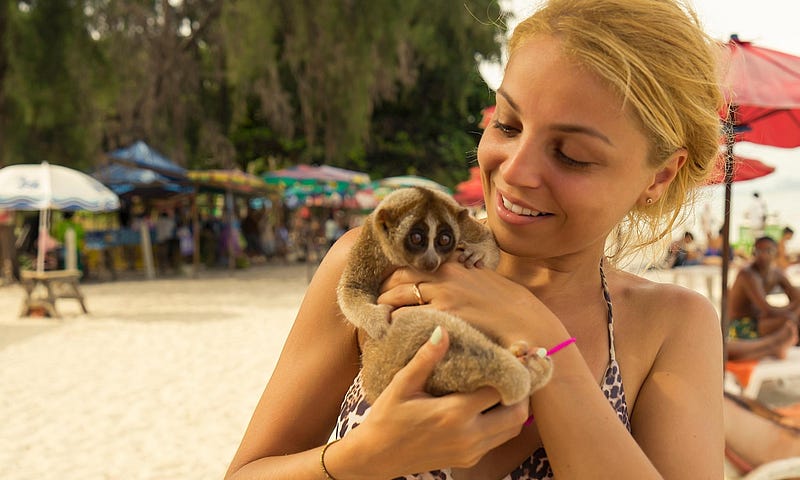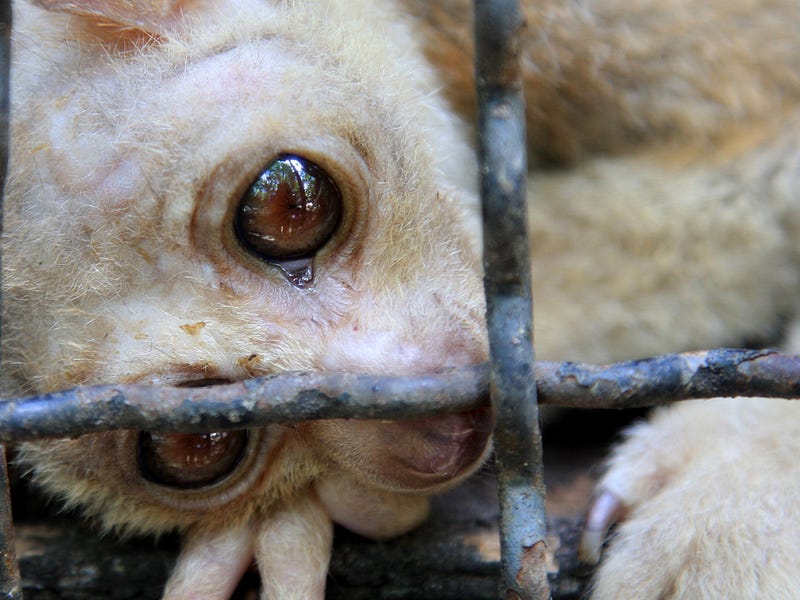Humans: The Ultimate Villains in the Slow Loris Story
Written on
Chapter 1: Introduction to the Slow Loris
Indeed, little buddy, you’re spot on. Humanity has its flaws.
For better or worse, we have established ourselves as the dominant species on this planet. While this is advantageous for us, it spells disaster for countless other beings.
We often engage in reckless behavior—whether it's hunting for sport or exploiting animals for medicinal purposes—while simultaneously obliterating their habitats for profit.
Yet, despite our destructive tendencies, some wildlife continues to persist. However, envisioning a future where the Amazon rainforest transforms into a vast soy farm, the air becomes filled with methane, and oceans are choked with microplastics, it’s evident that the future looks grim for many species. But for now, let's delve into the plight of some of the world's most beleaguered animals, starting with an undeniably charming creature:

Chapter 1.1: Understanding the Slow Loris
What exactly is a slow loris?
The slow loris is part of a group of primates known as strepsirrhines, which might sound like an ailment one contracts after an adventurous weekend, but it actually includes lemurs, galagos (also known as bushbabies), and, of course, lorises.
These small, nocturnal mammals primarily inhabit Southeast Asia, where they thrive in the shadows, foraging and avoiding human contact.
Description: This video explains the challenges faced by animals like the slow loris, emphasizing the negative impact of human actions on wildlife.
Chapter 1.2: The Plight of the Slow Loris
The first reaction upon encountering a slow loris might be, “Oh my goodness, how adorable!”
However, cuteness doesn’t equate to being a good pet, and in the case of slow lorises, it's a misconception that can lead to severe consequences.
Their main threats stem from habitat destruction and the illegal pet trade, leading to all eight recognized species being classified as either ‘Endangered’ or ‘Vulnerable’ on the IUCN Red List.
Section 1.2.1: Why Slow Lorises Make Poor Pets
A slow loris is not your typical domesticated pet; it’s a wild animal that inherently dislikes human interaction.
With their large eyes, they are perfectly adapted for a life in darkness, and they have specific dietary needs that are rarely met in captivity.
One shocking fact about slow lorises is that they are the only venomous primate.
They have glands in their armpits that produce a toxic oil, which they mix with their saliva to create a venom that coats their teeth.
While they mainly use this venom against other lorises, they are also capable of biting humans, leading to painful swelling or, in rare cases, severe allergic reactions.
Section 1.2.2: The Horrors of the Pet Trade
If you’re a reasonable person, you might think, “I’ll just appreciate them from a distance.”
Unfortunately, the illegal pet trade sees many people making the disturbing choice to buy slow lorises as pets.
This often involves the brutal practice of extracting their teeth with tools like pliers, which leads to severe health risks and high mortality rates during transportation.
To summarize:
- They thrive in darkness and suffer in bright environments.
- Their complex diets are impossible to replicate in captivity.
- They are used to roaming vast distances, making confinement torturous.
- Their venomous bites can cause significant health issues.
- Many endure painful dental extractions, leading to infection or death.
- The majority perish during transit due to inhumane conditions.
Chapter 2: Superstitions and Misconceptions
No discussion about endangered species is complete without mentioning the unfounded superstitions that surround them.
As a privileged individual from a developed nation, I can easily call out the absurd beliefs regarding slow lorises, such as their supposed medicinal properties or the myth that they bring good fortune when buried under structures.
These misconceptions contribute to the continued harm inflicted upon these creatures.
I’m not quite sure how to remedy this situation—perhaps by encouraging less lethal beliefs?
Description: This lecture explores the debate on whether humans are meant to consume meat or if a plant-based diet is more suitable, shedding light on ethical concerns tied to animal welfare.
Chapter 3: The Impact of Viral Videos
Many people first learn about slow lorises through viral videos depicting them being tickled.
While these videos may seem innocent, they promote animal abuse and fuel the illegal pet trade.
When a slow loris raises its arms in these videos, it’s not enjoying the attention but rather displaying a defense mechanism triggered by fear.
The truth is, these animals are terrified, often rendered helpless after having their teeth removed, making them unable to defend themselves.
What Can You Do to Help Slow Lorises?
Changing societal views takes time, especially when discussing deeply ingrained beliefs.
However, we can actively combat the illegal wildlife trade by refusing to support videos that depict slow lorises in captivity.
We must recognize that our engagement with such media encourages the demand for these animals as pets.
By signing pledges against the illegal pet trade, we can collectively make a difference.
By refusing to share or endorse harmful content, we contribute to the protection of slow lorises and the broader fight against wildlife exploitation.
In conclusion, while we have made a mess of the world for these delicate creatures, there is still hope.
Together, we can work to create a slightly better environment for the slow loris and other endangered species.
